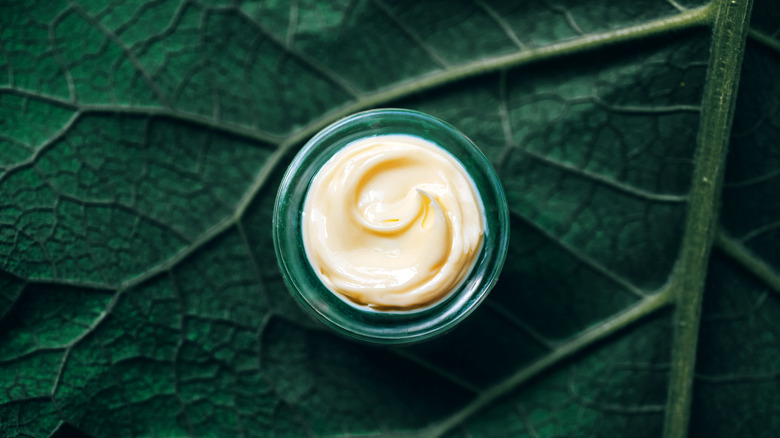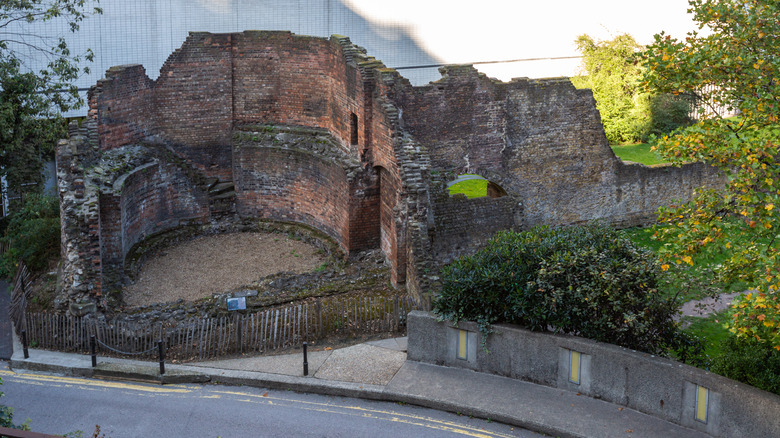The 2,000-Year-Old Skin Cream Discovered In An Ancient Roman Temple
When French writer and journalist Jean-Baptiste Alphonse Karr coined his phrase "the more things change, the more they stay the same," likely sometime in the mid-1800s, he wouldn't have been able to foresee all the extraordinary technological and social changes only a mere century-and-a-half down the line. Flight, antibiotics, social humanism and human rights, nuclear power, robotics, satellites, an instantaneous and always-on interconnected globe of trade and culture: the list goes on and on. But as Karr — and countless historians, ethnographers, anthropologists, linguists, archaeologists — could have predicted: yes, folks are still just as preoccupied with glitz and glam as always, particularly when it comes to their skin.
Enter one of the more extraordinary archaeological finds in recent memory: a tin pot of facial cream — foundation, in fact, as Nature tells us — from about 2,000 years ago, found in what was once the London province of "Britannia," in the small riverside town of "Londinesi," aka modern-day London. A perfectly sealed, artfully constructed, cutting edge cosmetic of starch, animal fat from a goat or cow, and tin to give it a creamy, translucent hue. There's even fingerprints in it, and swirly marks identical to what you might see in your own container of face cream in your bathroom at home.
Such a small, commonplace item sheds light not only on the daily habits of what was most likely the Roman upper class (or temple workers), but the entire flow of Roman culture as it made its way northward.
Modern cosmetic quality at a temple to Mars
As the Museum of Artifacts tells us, the discovery was made in 2003 at a temple to the Celtic and Gallic god Camulus, the region's analog to the Roman god of war, Mars (Ares to the Greeks). The team in charge of the site, Pre-Construct Archaeology, had been excavating for years before coming across what the curator at the Museum of London, Francis Grew, called an "absolutely remarkable" discovery. On The Guardian he states, "In my 20 years working in London archaeology I have never come across a box with a sealed lid." The site itself, per Vintage News, is located in Southwark on London's south side, at the intersection of two major Roman roads, and contained an 11-square-meter temple surrounded by a yard big enough for ceremonies.
A team from Bristol University, led by Richard Evershed, director of Bristol Biogeochemistry Research Centre, was able to chemically analyze the cream and actually recreate it. It's greasy because of the animal fat, but because of its starch component (same as in modern cosmetics), quickly becomes smooth and powdery. It even has "coverage comparable to that of modern cosmetics," as Nature says. The cream also has a lightening effect on the skin, as folks in ancient Rome valued fair complexions. This means that the ancient Britons, at that time, were already adopting the culture and habits of their empire's capital.
Also found at the site: another tin, a "wide-mouthed bowl," and a "life-size bronze foot."

